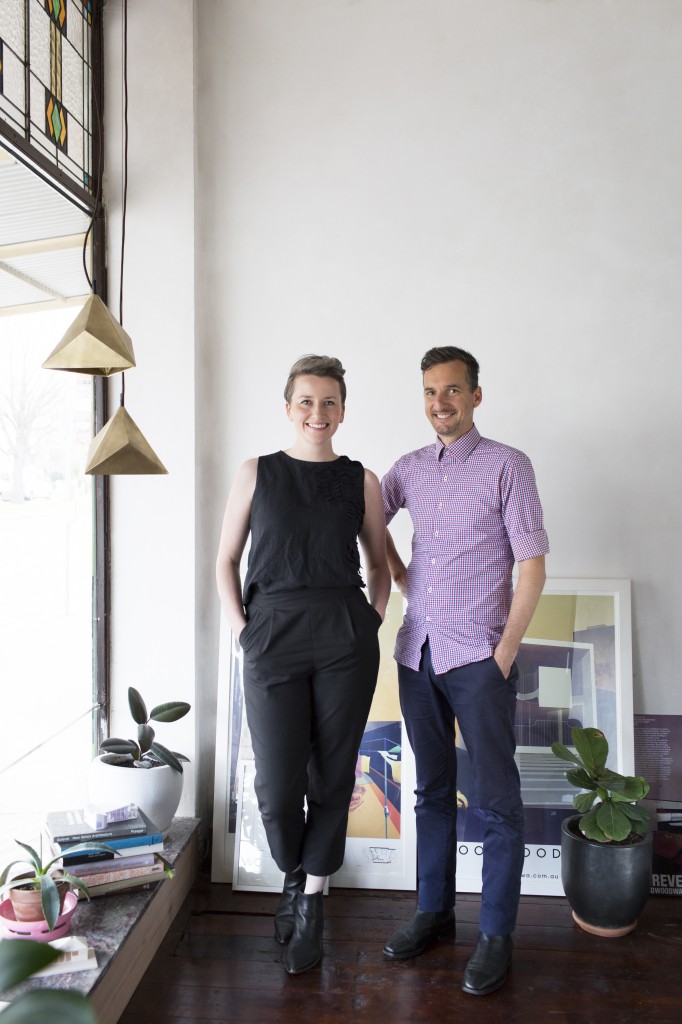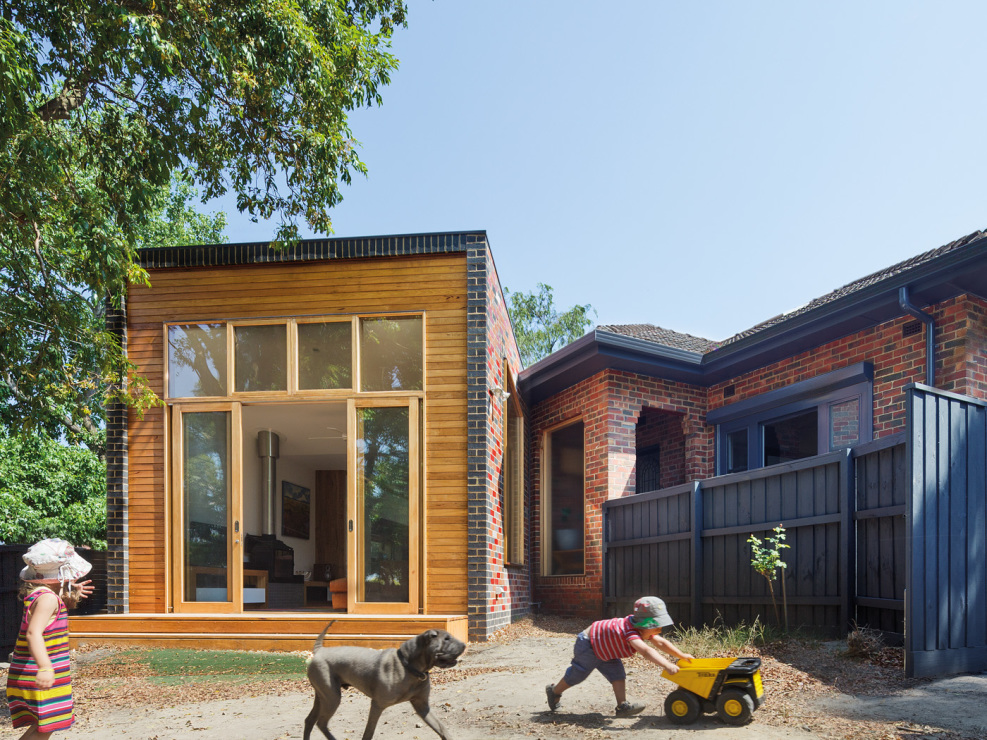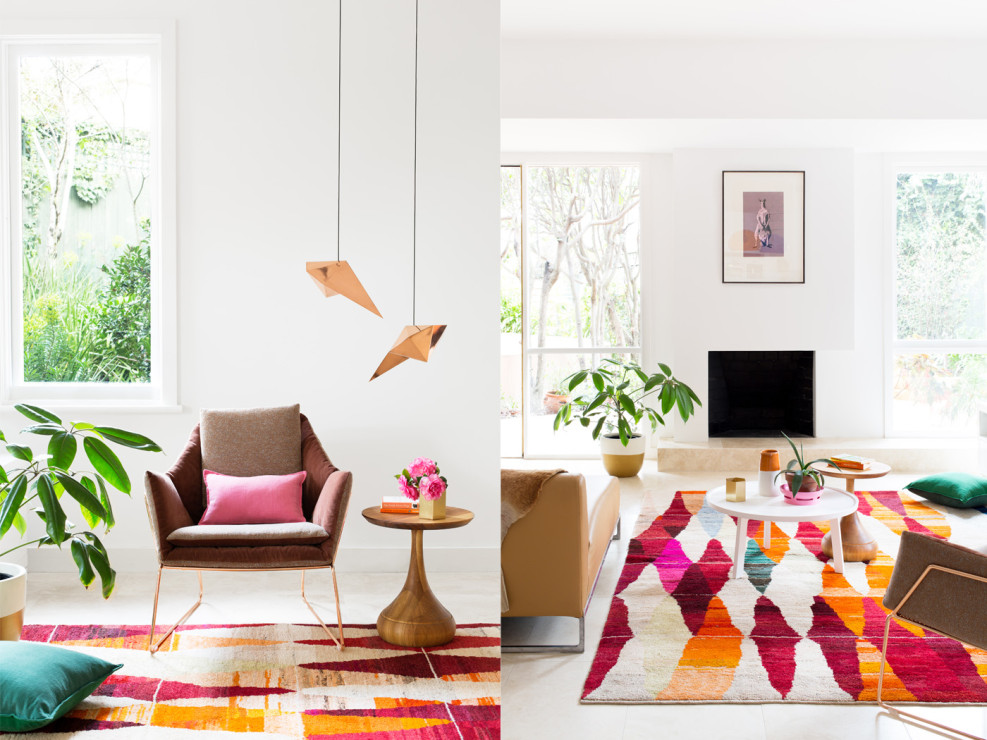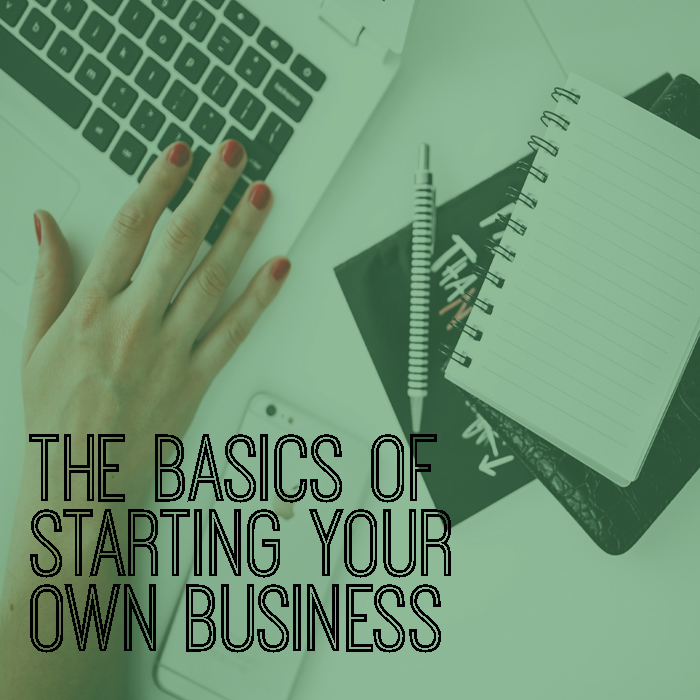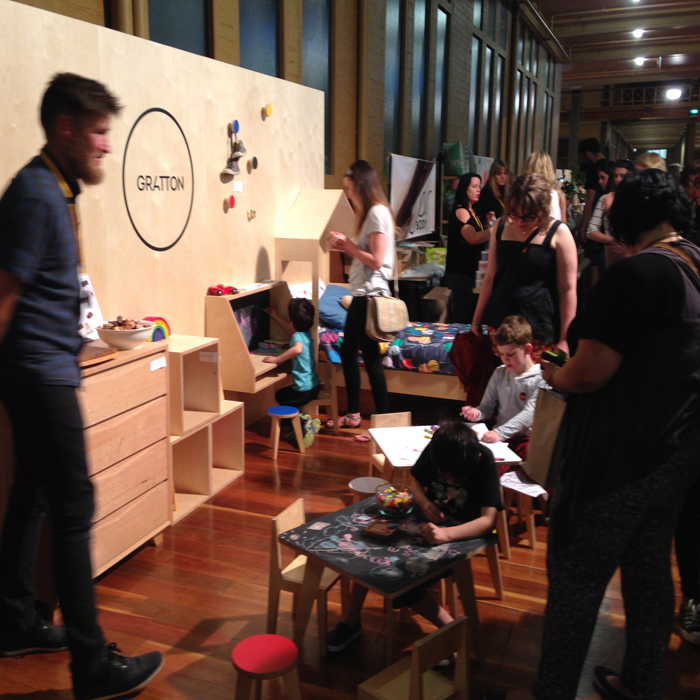Studio Visit: Monique Woodward, architect
 It’s not often on just hearing a name that you get such a strong sense of the dynamism behind a creative duo, but this is just the case with WOWOWA (implied!) whose co-founders Monique and Scott Woodward forge a next-generation approach to architectural practice with a kind of positive charge often missing in professional creative circles.
It’s not often on just hearing a name that you get such a strong sense of the dynamism behind a creative duo, but this is just the case with WOWOWA (implied!) whose co-founders Monique and Scott Woodward forge a next-generation approach to architectural practice with a kind of positive charge often missing in professional creative circles.
In WOWOWA Architecture & Interiors, the pair have created the kind of practice they always wanted to work in, one that prioritises artistic expression, teaching and advocacy as essential to ongoing creativity. Alongside partner Scott, Monique is a vocal advocate for improved living standards and accessibility of quality design as a tenet of modern Australian culture.
From their glittering Tin & Ed business cards to the bold glazed red brick façade of the Finn House, WOWOWA is unafraid of a playful nod to the kitch, and their declaration of a radical postmodernist style is one beautifully tailored to bring a fresh optimism to the architecture of the everyday – the humble family home. We spoke to Monique at WOWOWA’s shopfront studio in Melbourne’s leafy Carlton North about her passion for celebrating Australian culture and why more creatives should embrace the power of marketing.
As an emerging practice, WOWOWA has a strong brand and clear creative directive – what inspired that focus and how has it shaped the way you practice?
One of the biggest challenges we faced initially as a fledgling but ambitious creative practice was acknowledging that even if you were the greatest architect in the world, you need to be able to run a sustainable business to keep up that practice, and to successfully market yourself is a big part of that business’ success.
I undertook a marketing course at the local TAFE and we engaged a business coach, really immersed ourselves in marketing, read a lot of business and marketing literature alongside our favourite design journals.
We quickly realised that what we were saying to the world though our marketing - that we could do anything – was out of touch with the reality of our work at the moment. Whilst we do have a few small civic projects on the go and really enjoy the possibilities of larger scale projects, our current built reality is residential. Luckily, we love residential work, and it’s a big part of who we are as a practice, so it was important to acknowledge those roots and really emphasise its part in our core identity.
From this we developed a strategy that allowed us to focus in on the kind of clients we love working with – those who want to create their ‘forever home’. They’re committed to a place, and are prepared to do some soul searching, and explore what it is that they really want from a home environment.
Putting ourselves out there as a practice for professional families, with the tagline 'life is too short for boring spaces', we’ve found that people that subscribe to that will instantly recognise a kinship, and might know a little more of what to expect from us in the process. We can then work together and really bounce off each other in a super collaborative way. This makes the process a whole lot more enjoyable for both parties.
Image by John Gollings
How has this focus on creating a client’s ‘forever home’ influenced your work?
It gives us license to work with our clients in really rewarding creative depth, to find out what they think about colour, sculpture or pattern, and taking that through to find out how flexible and functional spatial solutions can work for them. I think that's one of our strengths, making small spaces work hard, and that's one of the reasons we love renovations, the challenge of really cranking up an existing space and making it truly multi-purpose.
Focusing on the small scale also allows us to really immerse ourselves in the application of the theory and art of creative practice. One thing is I’m a massive sucker for ornament. Ornament, in its three dimensions, really changes the way you perceive a space, and I think that's when a space really starts to get interesting.
What is your motivates you creatively?
My all-time favourite design inspiration has to be the humble Hills Hoist – there is so much ingenuity and kitsch beauty in perhaps undervalued elements of Australian design history that are ripe to be to explored creatively.
We see ourselves as a radically postmodern practice, propelling ideas forward to a new audience. Current trends suggest people are trying to revert back to modernism, and I find that quite unnatural, to be attempting to wind the clock back, and instead of creating spaces for living now, there is this tendency for blank spaces and miscellaneous design solutions; a blank floating shelf, a picture window to a non-descript view.
Society is always moving forward, and new technologies challenge the idea of the modernist home. We pride ourselves on not getting caught up on finicky modernist details but still having a very deep focus on embedding meaning in the quality of the interiors we create. We don’t necessarily prescribe what kind of curtains you should have, but we demand a high level of client engagement, that is often so rich that at the end of this day you can guide each other to the best solution for that space.
The nature of the construction industry means design and building programs can often stretch out over several years - how do keep up the creative energy between both clients and yourselves throughout that process?
From the very outset, we ask that our clients engage heavily in the design process, usually starting with inspiration scrapbooks, a simple cut and paste! Often in a 50c book or using sites like Pinterest, we get them to collect things from all kinds of sources, not just completed projects in design magazines. We want them to let us in on who they are, and the more information they can give, the greater depth of engagement we can have and the better the project outcome will be.
From a practice point of view - Mel (Bright) spoke at a recent AIA women's day breakfast about how there’s only really been three cycles of work in her ten years of practice, which is I think is an experience shared by many architects. It feels like we're about to hit our second cycle, which makes it exciting to see the development in our work and be proud of what we've achieved so far.
Image of Kooyong apartment by Martina Gemmola
How have you tailored your practice to allow ongoing teaching and community advocacy commitments alongside your design projects?
From the outset we wanted to create the studio that we had always wanted to work in, and one that would allow us to grow into as a practice. A lot of questions arose of what was important to us as a practice; it's collaborative, its deep in discussions, surrounded by plants, and embedded in the local community. We work fairly solidly from 9.30-5.30pm, respecting the workday, but recognise that we while could work till 10pm, it comes back to practicing what you preach - you can’t advocate to increase the standard of living and then work yourself to the bone in the process.
It means we’re able to maintain a lot of energy in the studio throughout the day, which is slightly more optimistic than spending half an hour on The Age website at midday then having to work late into the night. I’m reading managerial books and trying to look beyond being just technically good at what we do, because that doesn’t mean we're necessarily good managers or business owners, but we can be, so it's a skill that needs to be learned side by side with design.
We also implement 'cultural Sunday' which is to make sure we do something that a) recognises it's important to make time to experience new things to keep that fire of creative inspiration burning and b) can be instagrammed, so yes, we’re always looking for the marketing tool!
Keely Malady is a graduate architect living in Melbourne. Keely’s blog, Small Talk & Co. aims to hold a space open for a new conversation on the wonders of work, and all the small things that make up a life well lived. Follow her on Twitter, Facebook and Instagram
My Advice: Growth tips for Instagram
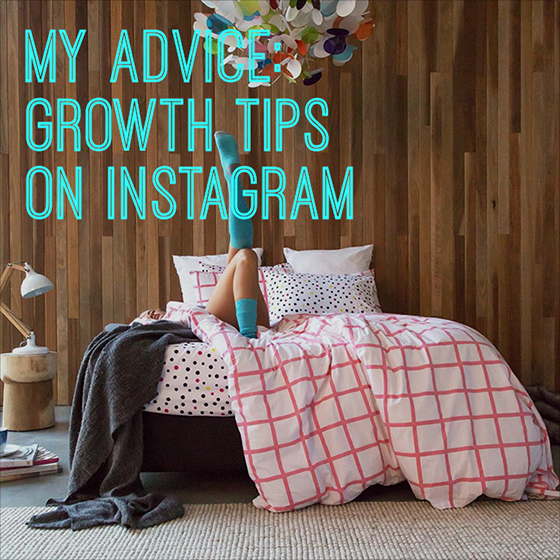 By Andrea McArthur
By Andrea McArthur
Three prolific Instagrammers share their tried and tested tips for growing your brand on Instagram…
Petrina Turner, Designer. Stylist. Maker. Dreamer. Do-er. Petrina Turner Design www.petrinaturnerdesign.com.au // Instagram @petrinaturnerdesign // Followers 21.7k

I don’t think it’s any secret amongst those who know me that I love Instagram. As a designer, stylist and maker I am definitely a visual person and Instagram is the perfect medium for me to use as a visual diary to capture inspiration and beauty on a daily basis. And if you really look there is beauty everywhere.
My biggest piece of advice to anyone wanting to grow their network on Instagram is to be authentic. I post about the things that speak to me, and share the things I love. I never really set out to build a profile on Instagram, I just wanted to capture the beauty and my following happened quite organically. As a small business owner I found it a place of incredible inspiration, a place where at any time of the day or night I was connecting with like minds and creative souls. And my tribe grew… and grew… and grew.
I don’t really use it as a marketing tool by design. I think that by sharing what I see, and how I see it, it gives people an insight into how I work and my style. I really love my work as a designer so of course I am often sharing my work, or snippets of it. So I guess in that sense my Instagram account is an extension of my portfolio. I think what I’m really doing is taking people on my journey with me, and that resonates.
And I like the interaction with people that Instagram gives me. More than the number of followers what has really been the greatest gift from Instagram are the genuine connections I have made through it. It has led to inspiration, collaboration, PR and most importantly wonderful friendships. I try as much as possible to respond to the comments left on my images. With the amount I sometimes get I don’t always manage to respond to every single one, but I can assure you that I read and appreciate them all.
So find your true voice and share it. People will listen if it comes from your heart.
Jessica Viscarde, Creative Director Eclectic Creative www.eclecticcreative.com.au // Instagram @jess_eclecticcreative// Followers 17.7k
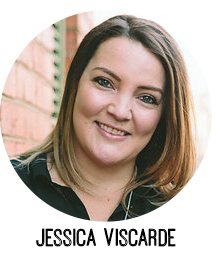
Tell your story I have always treated instagram as a visual diary and a story-telling tool that has documented my own work and a means of engaging with other likeminded individuals. I really believe that there is a market out there for absolutely anything and everything; you just need to find your people. And you find your people by simply just being yourself. Instagram is a powerful platform for reflecting your style, establishing your unique identity and showing off your creative flair. Everyone has a story that needs to be shared as we all have something to offer and can all learn something from it, so make sure you tell your own story through your visuals.
I started my own hashtag #pocketofmyhome long before anyone was really using them as a means of creating communities or connecting with others. I wanted a place where people could go and celebrate their own homes, not just the ones found in glossy magazines. I wanted to celebrate real homes with personality and create a little space for everyone to go and share their home pictures. Without much promotion at all or having to annoy people with too many competition spam, #pocketofmyhome now boasts close to 25K images from users all over the world! I love hearing that people have connected and become friends through the tag – what a fabulous community!
Be consistent Consistency is the magical, glittery goodness that in my opinion binds everything together and creates a visually stimulating and effective instagram. Consistency can come from using a similar theme/filter or colour way through your imagery, only sharing images from a particular genre (such as travel, interiors, food etc) or working out a mixture of everything but delivered in a consistent way, maybe posting time or your written style.
Consistency gives your followers a feeling of familiarity and builds trust and assures them the style of imagery they will see when they scroll down to your feed. My imagery is all mine, created by myself and our contributors and includes behind the scenes shots, images of my own home and even features my little rescue cat, Peg… as I want to tell my story and part of that is I love cats!
Quality + crediting Instagram is visual so make sure your images are of excellent quality so people actually want to see them and like them. This means no pixelation or blurred images, no selfies in the bathroom or toilet and if you are using apps to edit or reframe your images, pay the extra couple of bucks to have their ads or text removed! I also prefer to share my own work so my followers can get an authentic sense of the work I can create and deliver and who I see whom I collaborate with… In the rare occasion I regram an image, I make sure I credit where credit is due. Make sure you mention the account, not just tag them in (as so many people don’t see the tags) and ensure the credit/mention is in the first line of your message. And don’t forget to credit the photographers, they always get missed out. Just do the right thing and share the love… correctly!
Engage with your followers Lastly, engage with your followers, talk to them, and get to know them, let them get to know you. You’d be surprised whom you meet on instagram and can connect with. I have an amazing amount of support and have spoken with so many gorgeous people all just doing their own thing. Many of my collaborations have come from connections made on instagram so talk to people; you never know where it may lead.
Madeleine Dore, Founder and editor of Extraordinary Routines www.extraordinaryroutines.com // Instagram @extraordinary_routines // Followers 6,953
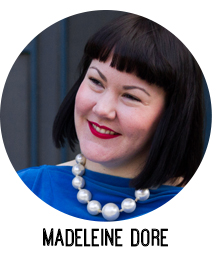
The nature of my interview project Extraordinary Routines has allowed my Instagram network to grow quite quickly. While a complete bonus, it’s helped to have interviewees with large followings share snippets of the interview and praise the project on their profile.
That said, people are discerning and won’t necessarily follow you on Instagram simply because someone has shared your work. You need to capture their attention when they click through to your profile – make it is as easy as possible for them to identify what you are about, and determine if your aesthetic is for them. From the beginning, I tried to keep the overall look of my feed consistent, quirky, and colourful. My profile description and icon clearly communicate my focus on creative’s routines, a topic that seems to create intrigue. Some Instagrammers who do this well include @oakandink, @chiliphilly and @socalitybarbie.
For me, the offline network I have grown through Instagram has been more fulfilling than seeing the number of followers grow. I was recently out to dinner and I looked at the friendly faces at the table and realised I had met them all through Instagram. I’ve made some beautiful friendships, and it’s as simple as telling people you admire their work, and once you have built some rapport, suggest coffee or brunch. I’ve even nabbed some dates that way! But romance aside, my favourite social media tip is to be social!
– – –
Thank you ladies for providing your tried and tested tips for growing your brand on Instagram. Title image by Eclectic Creative (@jess_eclecticcreative) from Instagram.
Andrea McArthur (www.andyjane.com) has a passion for all things visual and works as an Art Director and Freelance Designer based in Brisbane. Design is her true love and she goes weak at the knees over strategic branding. You’ll find her sharing on Instagram @andyjanemc.
Women in art: Dorothea Tanning
The basics of starting your own business
By Jes Egan
Thinking about starting your own creative business? Or have you already and are not sure that you’ve set everything up correctly? I’ve had many conversations with people who are toying with this idea and wondering where to start. I don’t mean what your business does or what it will sell, as generally the people I speak to already have that part sorted out. Most people know what they want to do, just not necessarily how to go about it or where to start. Personally, I think if you have your creative business idea worked out and you think there is a market out there for you, then that is the hardest part.
Some of the most amazingly creative people I’ve found are often overwhelmed (or bored) by what I’d call the ‘admin’ side of setting up a creative business. It can be the not-so-exciting part of your business, but it is really important. Taking some time and putting in the effort into this may seem fiddly and annoying but doing it properly can save you time, effort and money in the future.
What’s in a name?
The name you trade under is so important. How you come up with a name or what you choose can all be the fun part, however there are some requirements that you will need to check before you start using it.
If you wish to work under your own given name as a sole trader then you don’t need to register ‘your’ name, however if you wish to trade under a business name, you will need to register this name with ASIC (Australian Securities and Investments Commission). First thing to do is check that the name you wish to use is available and not being used by someone else. You can do this here. If the name you wish to use is available you then need to register this name with ASIC, you can do this here.
Just note that you will need to have an ABN (Australian Business Number) or be in the process of applying for one (with an application number) to do this.
An ABN (Australian Business Number) is important to have, although it isn’t mandatory if you’re a sole trader (as you will use your Tax File Number). To find out if you’re eligible for an ABN have a look here.
Money, money, money
A business bank account is one of the things I can’t recommend enough. It is really important to keep your business and personal accounts separate. This is a good way to keep track of what money is business related and to ensure you don’t spend too much of your personal money on business expenses.
I would recommend shopping around for the best business account for you - fees can vary so ensure you find something that you’re comfortable with, keeping in mind that you will need your ABN available when opening business bank accounts.
For my little creative business I have three accounts;
-
A transaction account, where the income from my sales goes and my expenses goes out of
-
A GST account, this is where I put 10% of all of my income into to ensure that I have my GST available if I’ve earn't enough that financial year to pay it
-
A business savings account, if I have a little profit sitting in my transaction account I move it into this account to earn better interest
Often banks can help with a small start-up loan or overdraft, which could be something worth considering as unexpected costs can happen. A Small Business Banker likes to see your business plan and don’t panic if you’re not sure it’s complete, some banks are happy to see a work in progress and some of them will even help you with this.
Registering for GST is something to think about if you run a creative business in Australia. If you’re expecting to earn less than $75,000 per financial year, then technically you don’t have to register, but if you think you may get close to that amount then you may need to. You can register for GST when you start your creative business or any time after if you think you’re going to reach the $75,000. If you would like more information about registering for GST have a look here.
Quoting and invoicing is also something that is important to know how to do. I’ve written a specific post dedicated to this alone, see the Guide to Quoting and Invoicing.
Call in the experts
When running a creative business you won’t be able to (or want to) do everything. Knowing when to bring in an expert in to get the right advice is an important thing to understand. For me, this is with all tax related items as this can be daunting at the best of times. I strongly recommend getting a qualified accountant’s advice for tax related issues.
If you can afford it, there are business mentors that you can work with that can help risk assess your product, target audience and business plan. A good place to look for one is through the Small Business Mentoring Programs (SMBP).
There are many things to set up for a new creative business and these are just some of the things that will help get you on your way. Taking the risk and going out on your own is a big step but don’t be scared by the ‘admin’ things. Once these are done, you can focus on the fun things like the branding, building your website and of course, your fabulous creative product or service that you’re offering.
You’ll get what you put into it, so give it a go, be bold and enjoy!
Please note that the above advice is informative only. For business advice, please speak to an accountant, lawyer or tax agent.
Jes is a ‘practical creative’ and a very busy lady, doing the business in a digital agency, being an artist, a university lecturer, and small business owner who can creatively be found cutting up a storm at paperchap.com. Follow Jes on Instagram and Facebook.
How a vacation can help your business
Most of us find ourselves dreaming about our next vacation or travel holiday but don’t book anything. Many of us follow travel accounts on Instagram, commenting on how much we’d love to visit this destination, but then don’t take any steps to get there. We want more time in life to take holidays, spend time with the family and just relax but find ourselves at the end of the year with accrued paid leave owing to us. So what’s going on?
For many of us, taking time away from our work, whether we are in paid employment or run our own business, can feel overwhelming. But its one view to be busy and another to confuse it with having a negative impact on your success. I don’t know about you, but I’ve always felt a personal change upon returning from a vacation, for the better. And for the positive impacts it has on my work, taking a vacation is no longer perceived as a luxury, but rather an essential part in the outcome of my busy work/life schedule. Here are five reasons why I make taking the time to travel each year, a necessity in my life:

A change in perspective. Travel gives you the opportunity to get away from your usual routine, the people you meet, what you eat, how you sleep and where you work… You begin to view things differently, think outside the box and allow yourself to take on something new.
When you travel, especially to underdeveloped nations or unknown destinations, you open yourself up to new ideas. You begin to appreciate how different life can be and you return to your own lifestyle with a fresh perspective and point of view. Consequently, the flow-on effect leads to new ideas or solutions to problems you may have been facing prior to your vacation, by allowing yourself to think in new ways.
Take a break and recharge your batteries. Travel gives you a chance to renew your energy, find your balance and re-align yourself. Most people reach a point throughout the year when logic becomes cloudy. Productivity declines and enthusiasm wanes. Taking a break, relaxing and switching off are ways to refuel yourself and find your positive energy. This opportunity allows you to indulge in your own needs for a period of time. And when you return, improve your productivity at work with your new, positive outlook on life.
To push your limits. Travel allows you to break a routine that at the best of times, is designed to make you work efficiently and effectively each week. But in doing so, you also build yourself a comfort zone and forget your ability to push boundaries to grow your business and work opportunities. If you’re thinking about applying for a new role, starting a new business or growing an existing one - you need to think beyond the norm. You need to push your boundaries. If you expose yourself to this way of thinking, you will teach yourself how to build the courage to do this in other areas of life, i.e. work, fitness and health.
Find inspiration. Travel gives you the opportunity to think for yourself for uninterrupted periods of time. Taking a vacation allows you to consider and contemplate issues/topics/opportunities that have been sitting on your to-do list for some time. When you give yourself the chance to think about something else than your daily routine and work commitments, you open your mind to new possibilities.
Network and meet new people. Travel allows you to network organically, especially if you travel independently or on your own. Travel forces you to talk to people, ask for help, seek advice and start conversations with strangers. It also shows you your strengths and weaknesses in your ability to communicate, adapt to new situations and accommodate different cultures and customs.
Start changing your perception about taking time off from work to travel. Reverse the logic and the tendency to perceive a vacation as an indulgence in life, but rather, focus on the benefits travel can offer you at work and your general overall happiness.
Images by Pexels.
Behind the scenes: our first market stall
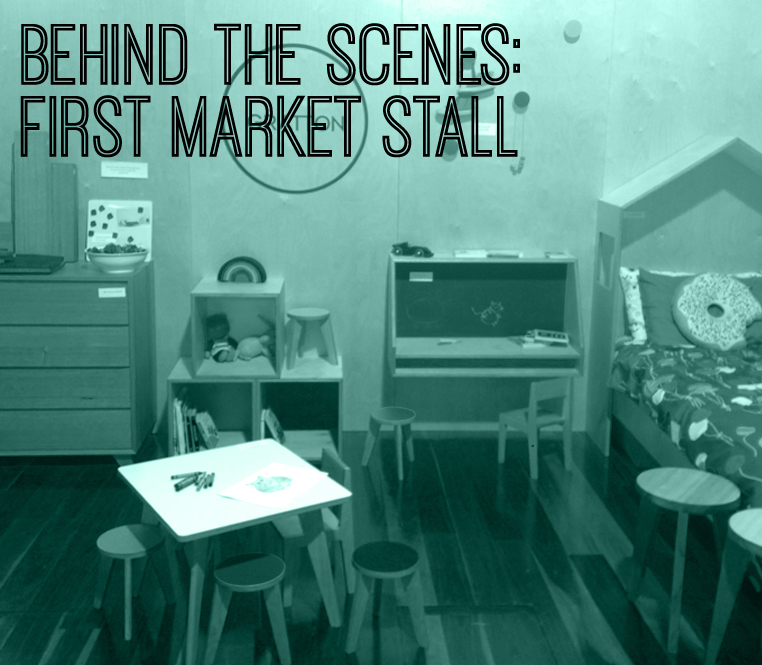 By Emma Clark Gratton
As I’ve mentioned before, my husband and I run a furniture-making workshop and have recently released a range of kid’s furniture. We are big fans of visiting craft and design markets so took the opportunity to launch the new range at a market. While furniture isn’t commonly sold at markets (besides old bearded men making coffee tables out of stumps at your local hippie market), we thought it would be a great way to increase awareness of our brand, meet our customers and make some new connections.
By Emma Clark Gratton
As I’ve mentioned before, my husband and I run a furniture-making workshop and have recently released a range of kid’s furniture. We are big fans of visiting craft and design markets so took the opportunity to launch the new range at a market. While furniture isn’t commonly sold at markets (besides old bearded men making coffee tables out of stumps at your local hippie market), we thought it would be a great way to increase awareness of our brand, meet our customers and make some new connections.
Which market?
There are heaps of markets to choose from, depending on the type of product you have, the amount of stock you are prepared to make and who your customer is. Markets range from smaller specialty markets, such as Boutique Markets and Rose St Artists Market, to local community markets, right up to design markets such as The Finders Keepers and trade fairs such as Life Instyle. We decided to apply to The Finders Keepers in Melbourne, as the ethos and clientele suited our products.
The countdown
Once we had confirmation that we were officially accepted into the markets, the real work began. We used it as an opportunity to freshen up our business, so we had a new logo designed, overhauled our website and designed a few new products. I arranged for new business cards, postcards, stickers and stocksheets to be printed, and made a huge masterlist of everything we would need on the day, from props to snacks to packing materials and payment facilities.
On the day
We had the afternoon to set up our stand before the markets opened at 6pm. We had prepared a quick mock-up of the stand in the workshop beforehand, so I had an idea of where everything would go. Once we had the stand up and ready, we wandered around and were blown away (and slightly intimidated!) by how amazing everyone else’s stands looked. We met our lovely stall neighbours, had a quick bite to eat and then the crowds poured in.
We quickly realized that it was up to us to engage the customers and be as approachable as possible. Start talking to people as soon as they approach your stand and keep smiling! It might feel artificial at first, but asking people how they are, how they are enjoying the market and letting them know something about your products can be a great way to make a connection and hopefully, a sale.
That said, being ‘on’ all the time can be exhausting, so take regular breaks. Make sure you bring a friend or helper to cover the stand while you duck off to eat lunch or have a rest.
What worked
Getting customer feedback
Getting to meet our customers and potential clients directly was invaluable. It was a great way to see which products people were interested in, what customizations were popular and who our customers were. For example, quite a few people asked if we made bunk beds. We didn’t, but are now adding bunk beds to our range in response to the customer feedback. We had always imagined mums being our biggest customers, but just as many dads purchased products too, which was interesting information.
Lollies
I grabbed a few bags of lollies at the last minute and put them in a bowl on one of our kid’s tables. It turned out to be perfect, as lollies attract kids and kids bring parents! We also provided chalk to draw on our Mini Chalky tables and crayons and colouring in pages for our Mini tables, which were a hit with the kids. While the kids drew, we chatted to the parents and made a few sales and contacts.
Trolleys
Beg, borrow or steal at least one trolley to carry your gear. Using a trolley will literally cut your bumping in and out time in half. We ended up lending ours to our neighbouring stallholders once we were unpacked, as it was a bit of a walk to the carpark and lugging boxes of stock and trestle tables is not fun.
What didn’t
Fancy shoes
I made the mistake of favouring fashion over function on the first night and my feet were not happy. Make sure you wear shoes and clothes that you will be comfortable standing in all day, in hot or cold weather.
Not spending all our profits
As tempting as it is, try to resist spending all your cash! As much as we love to support other handmade businesses, we did want to take home some profits and so I set myself a budget for a few special things that I was eyeing off over the weekend. Chatting to other stallholders is an excellent way to get advice, suss out how other small businesses do it and make new connections.
Not being prepared for the post-market rush
We expected to be busy the weekend of the market, but were not expecting the amount of orders in the weeks following. Our site received more traffic than ever before and we got a lot of requests for custom orders and different projects. In retrospect, this should have made sense as people don’t really go to a craft market to buy a large piece of furniture and would rather purchase it later on. We managed to adjust our workflow to accommodate the influx, but it would have been better if I had planned for the orders.
Emma Clark Gratton is an interior designer, writer and podcaster who, alongside her husband Lee, runs GRATTON, a timber furniture and architectural joinery company. She blogs at Worst House Best Street and posts endless photos of her sons on Instagram at @emmamakesthings.
Studio visit: Kelsie White of K Gets Organised
 Kelsie White packages a new set of cards in her home studio in Northbridge, Perth.
Kelsie White packages a new set of cards in her home studio in Northbridge, Perth.
By Kristen Marano
Kelsie White is changing the stationery game with her cheeky sayings and fresh designs. Her cards challenge the need for an occasion to send a sweet note with lines like ‘You’re my favourite blanket stealer,’ and her sleekly-designed paper pads encourage people to make to-do lists they’ll actually fulfil.
White’s childhood enthusiasm for stationery kick-started her paper goods business K Gets Organised in 2014; she has since created a collection of more than 100 products that fuse black and white sleek typography and cheerful watercolour designs such as popsicles and doughnuts.
At only 23 years old, White is a creative woman on the move who is constantly connecting and creating. White designs and packages in her bright sunny studio in the hip neighbourhood of Northbridge, Perth, sells her paper goods at local market stalls, and keeps learning as she completes her graphic design degree.
White is also the event host of the Perth chapter of Creative Women’s Circle, and she will launch the second event of the year this week. We recently chatted about how she got her start in stationery, her creative process, and where she plans to take her business next:
What attracted you to paper goods?
I'm what I affectionately call a stationery addict. I also love a good card stock, a hardbound notebook with the perfect paper inside, and writing out my to-do list every day. There is nothing better than sending and receiving a hand-written note from someone. The nostalgia and old world charm of stationery and hand writing, from getting your pen license to writing your wedding vows, really brought me to stationery; it has made creating and designing for special, heartfelt moments so beautiful.
Take me through your creative process.
I usually draw from a real life experience. My favourite yellow water-colour card reads, 'You're just so bloomin' lovely', and I made it with my beautiful girlfriends in mind. I was studying and working as a florist at the time and loved giving them little left over flowers from my shifts. That’s how I created the card.
A lot of my illustration work also comes from people around me. I recently drew some lovely popsicles for a local business called Delish Ice. I love the owner Katie and I’m so happy to have her as a friend; it was so much fun to draw happy little popsicles while thinking about her passion, drive, and kindness.
I also love to draw from current trends; my latest planners feature doughnuts, indoor plants, and popsicles.
Sketches, and water-colour designs mark White’s studio walls as inspiration and new works in progress.
What puts you in the mood to create?
A great cup of coffee, a beautiful cafe, and Wi-Fi. With all of these things, the world is my oyster.
You're successfully running your own business at such a young age. Who has influenced and inspired your journey as a small business owner?
I really wanted to be my own boss and push myself to try something new. I had never studied business or run a business before.
I've been studying art and making art since I was very young, and I wanted to get back into creating while I was at university; I started making planners to help motivate me to complete my assignments. From there I launched a tiny collection of five planners and now have more than 100 products under my belt. This was not an easy journey, but it is by far the thing I’m most proud of doing in my life.
My role models include Anna Rifle Bond from Rifle Paper Co., who I was lucky enough to meet in London last year at a stationery conference (they exist!), and Sass Cocker from Ask Alice in Melbourne. They both really inspired me to go out there and create beautiful paper goods.
What can we expect from K Gets Organised in the coming months?
A really big and exciting change that will launch around February 2016.
In December, White will depart for a creative getaway through Europe and the United States. To follow her journey and get regular behind-the-scenes posts, check out her Instagram.
Kristen Marano is a digital nomad living in Perth, Australia. Kristen interviews women in business. She contributes to Huffington Post Canada, and produces a weekly newsletter, Creative Women Weekly, featuring stories of creative women from around the world. Follow Kristen on Twitter @kmarano.

